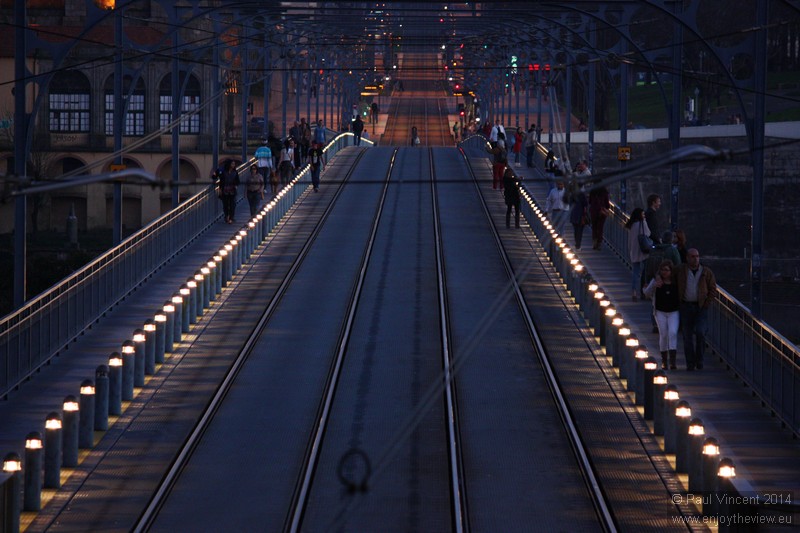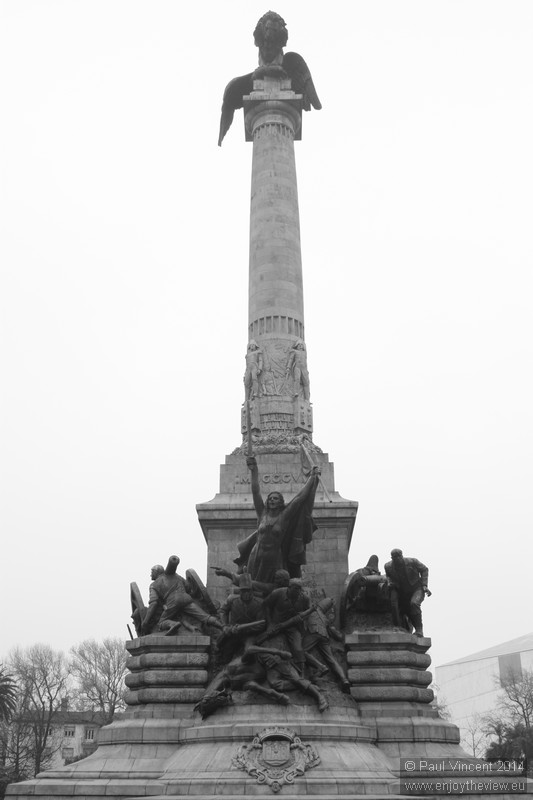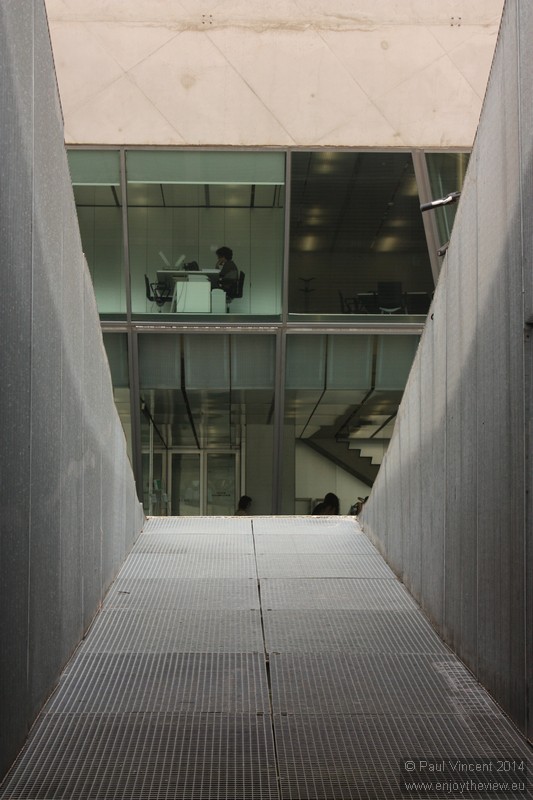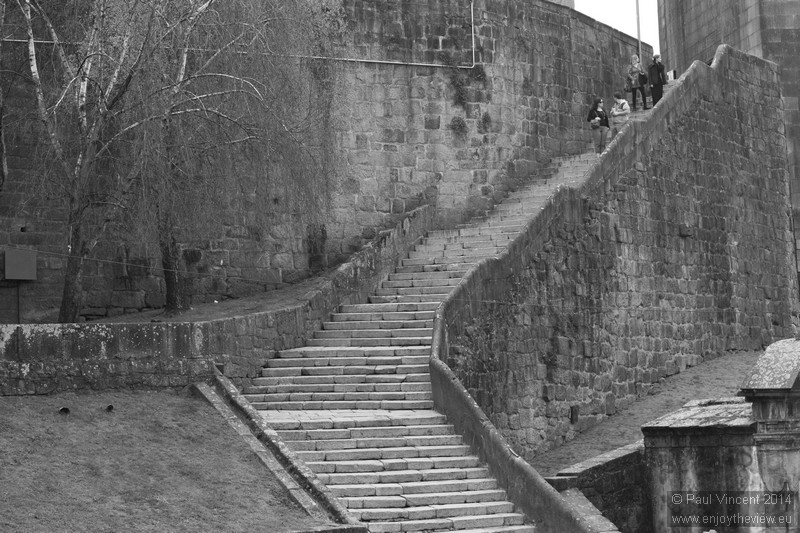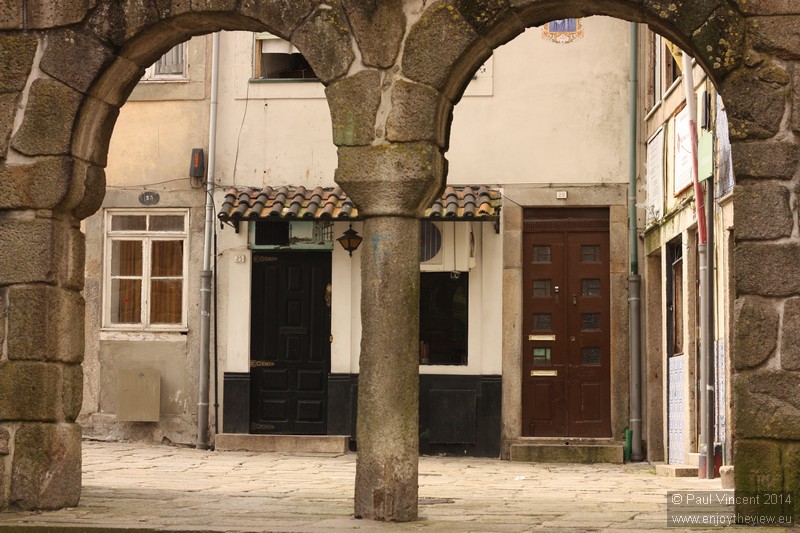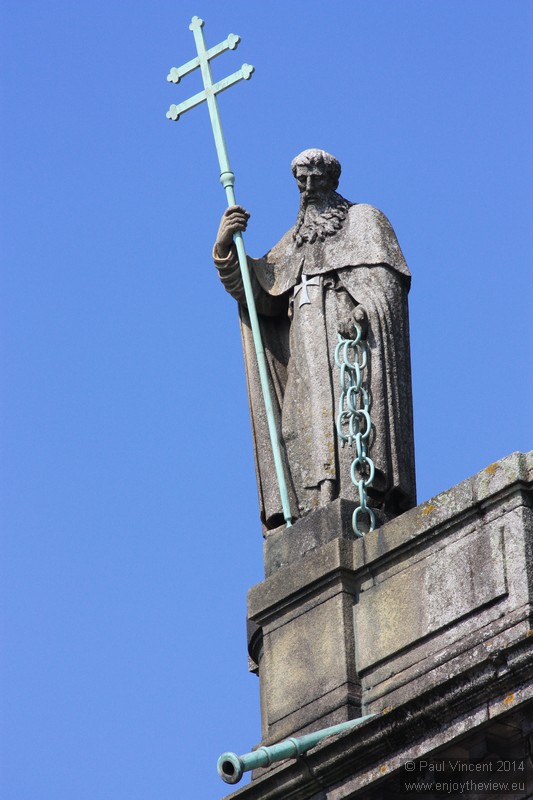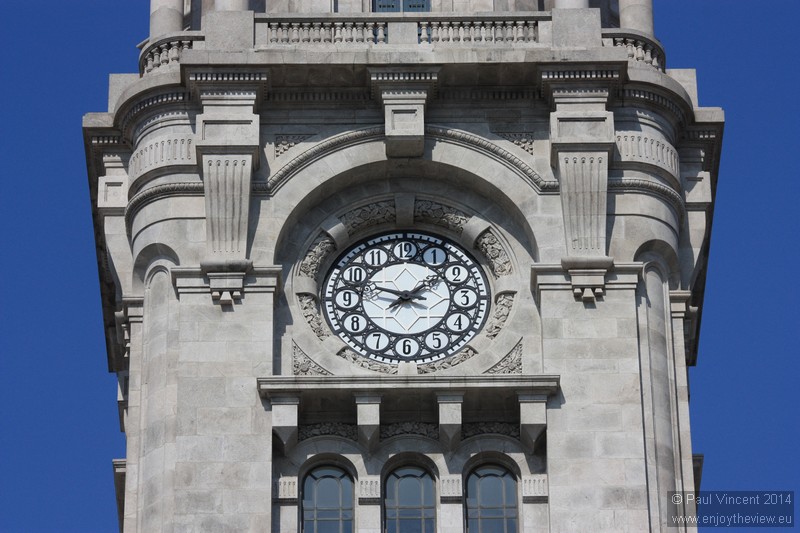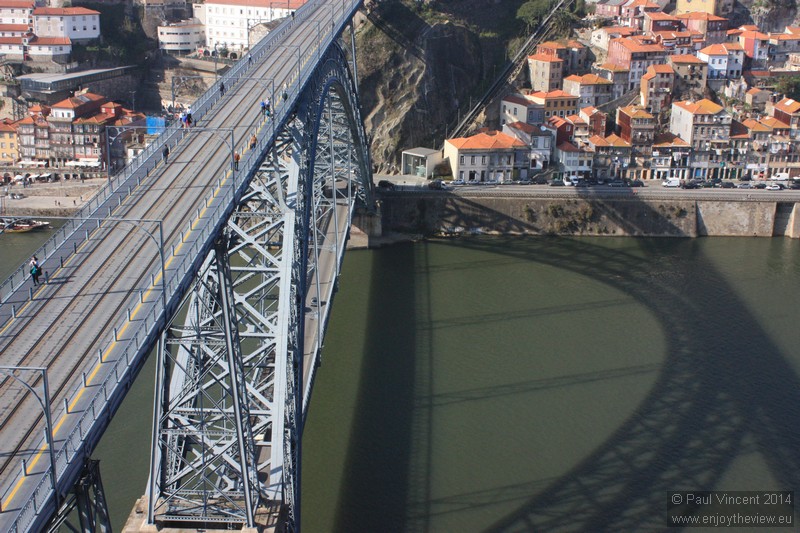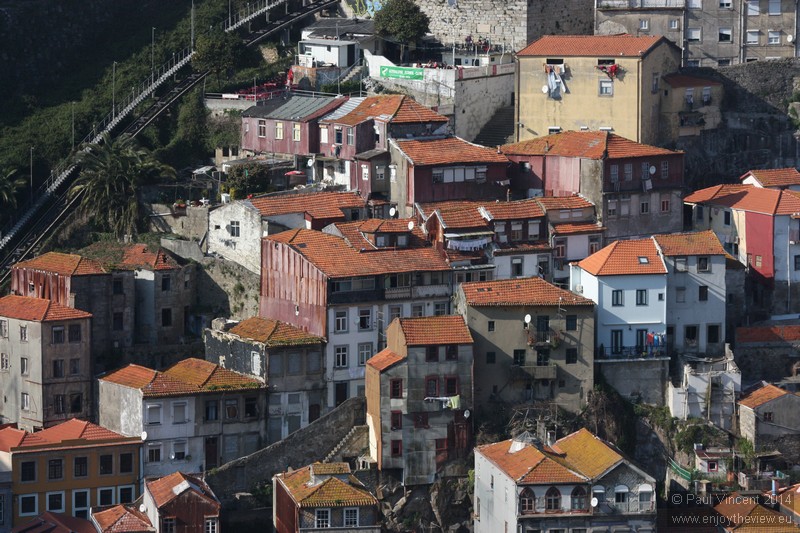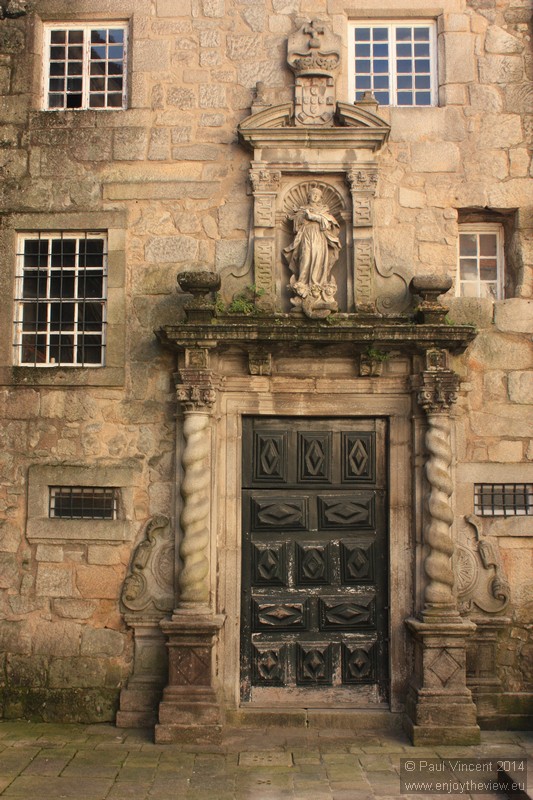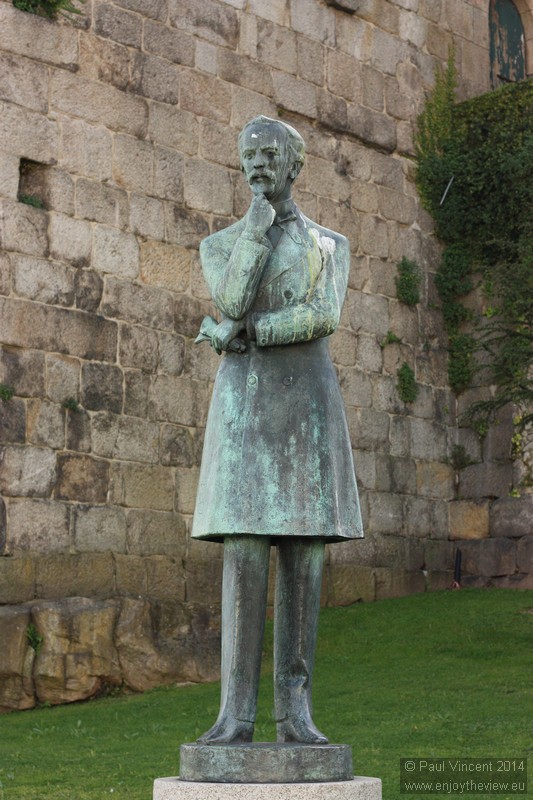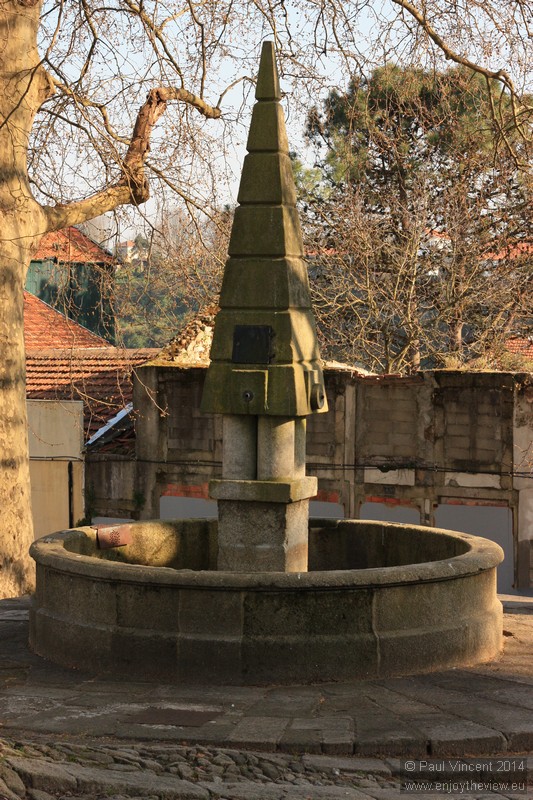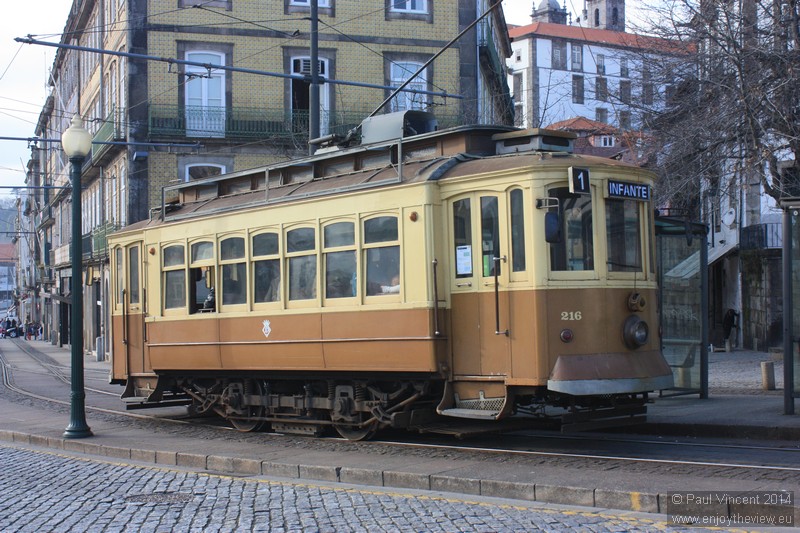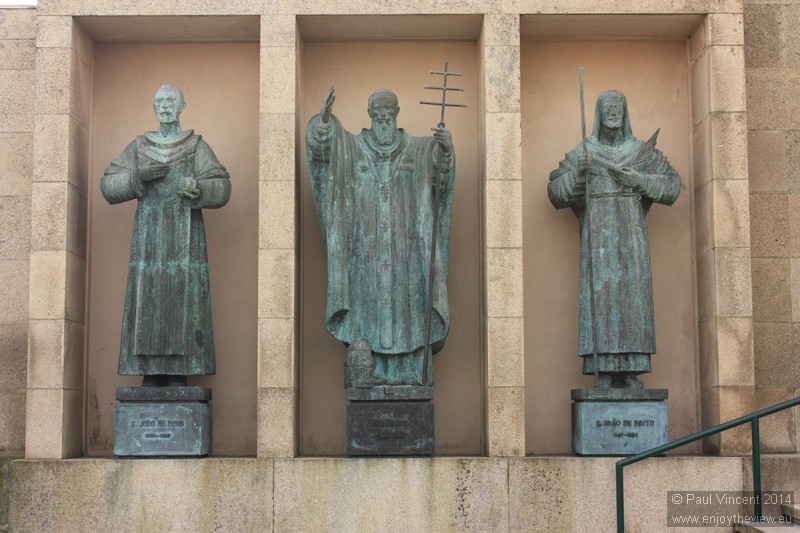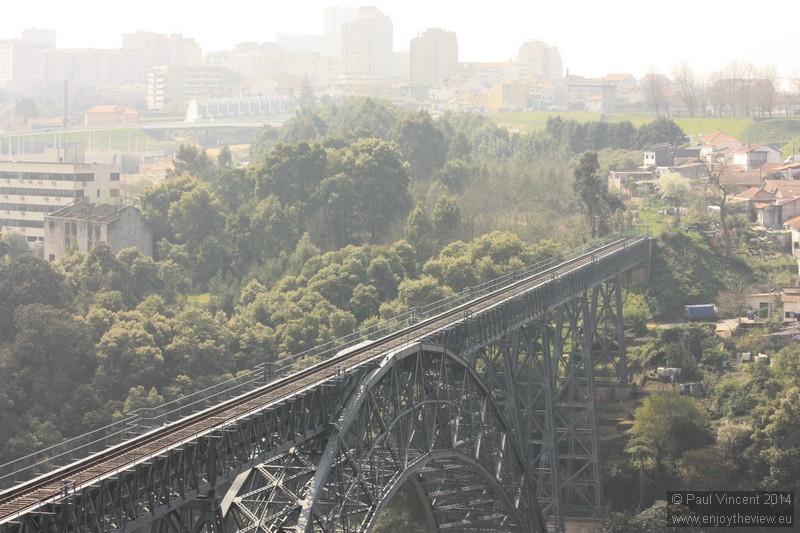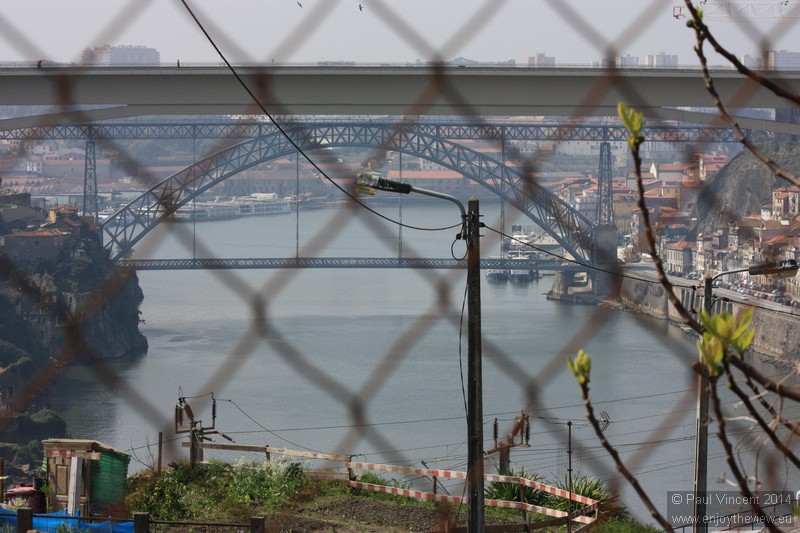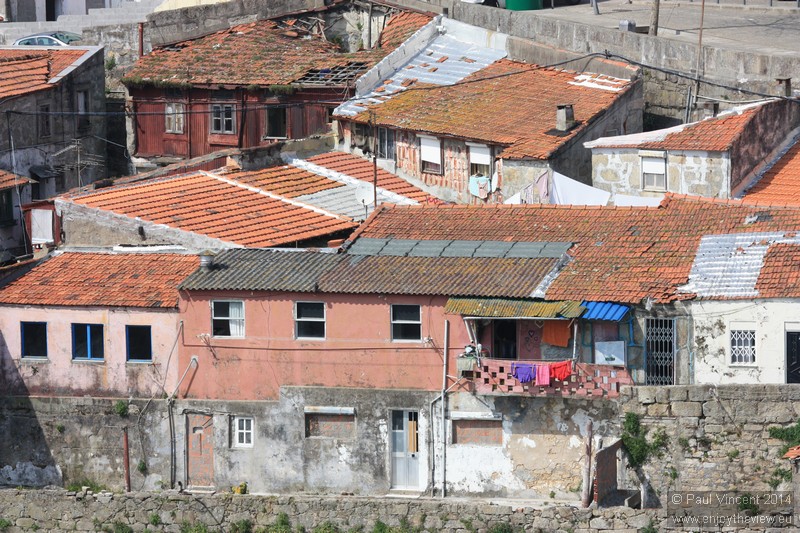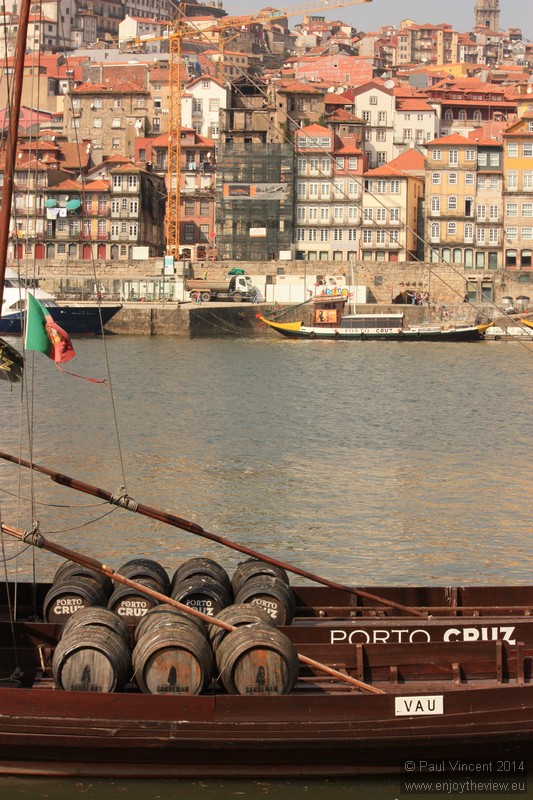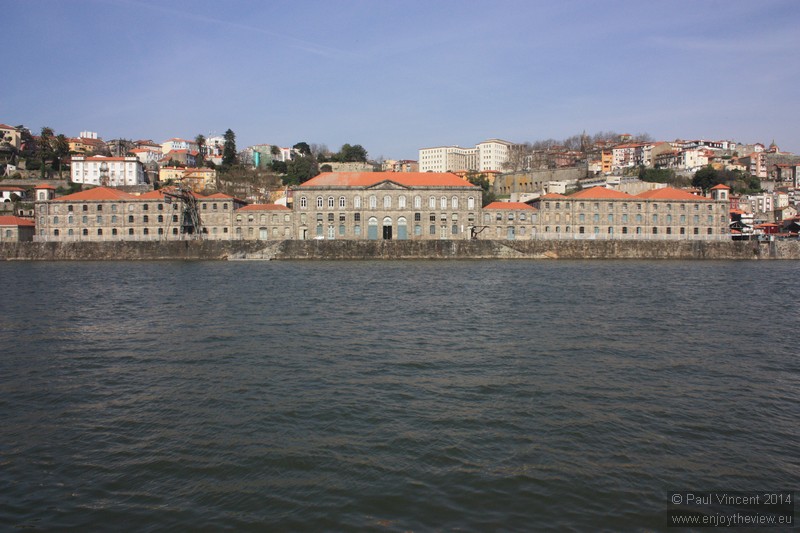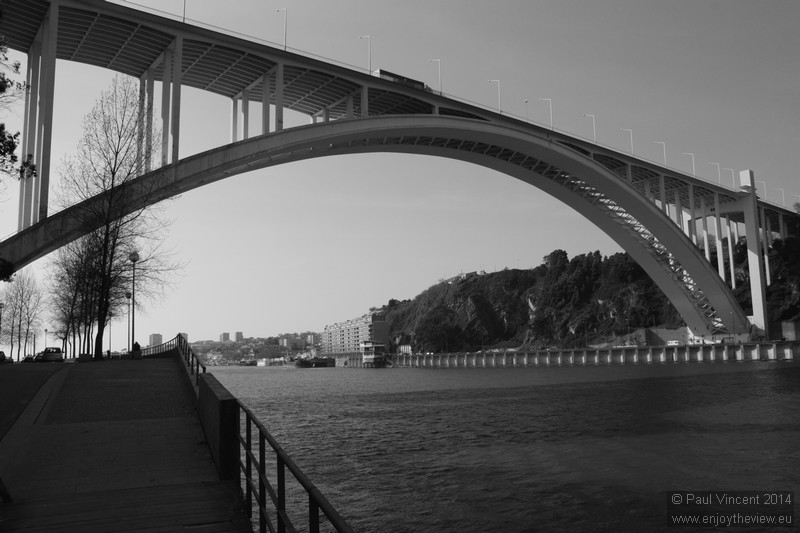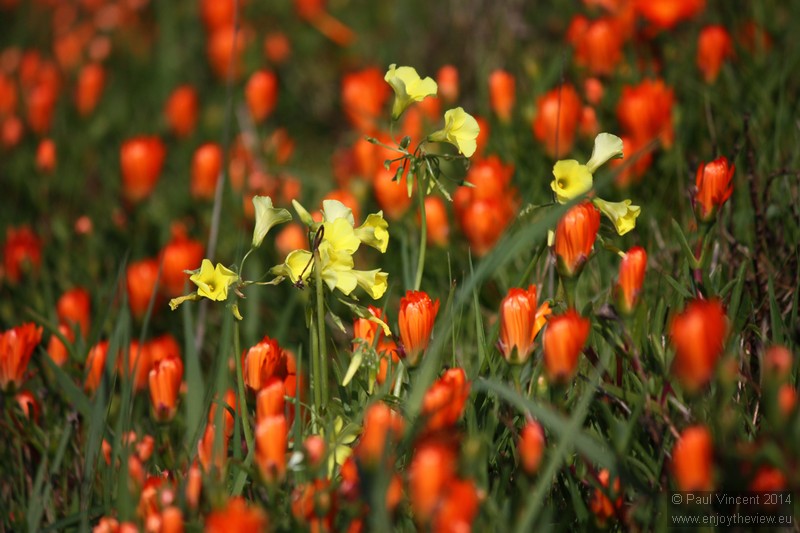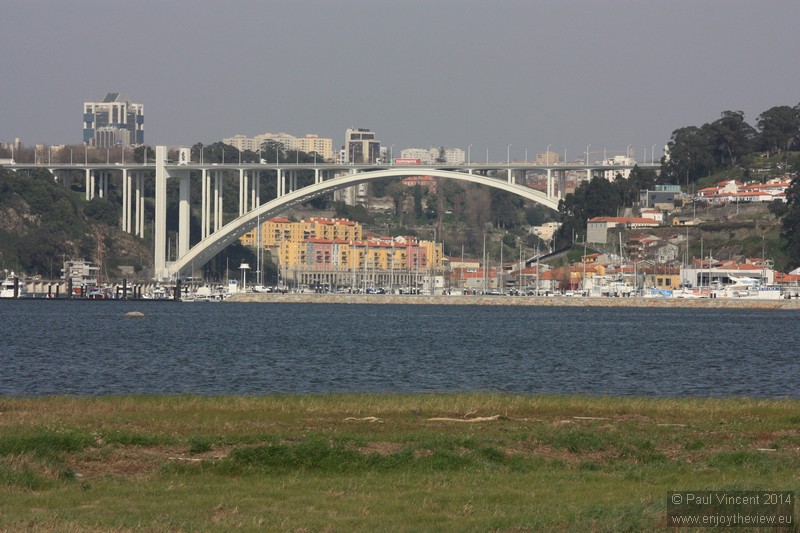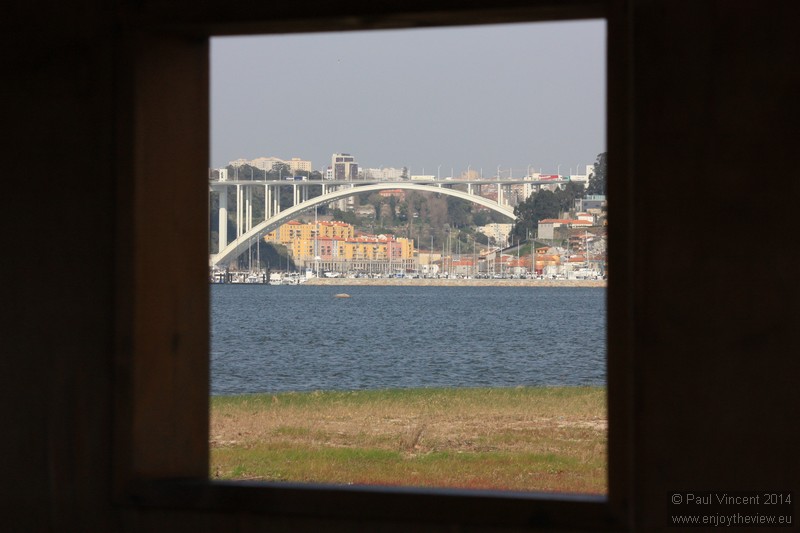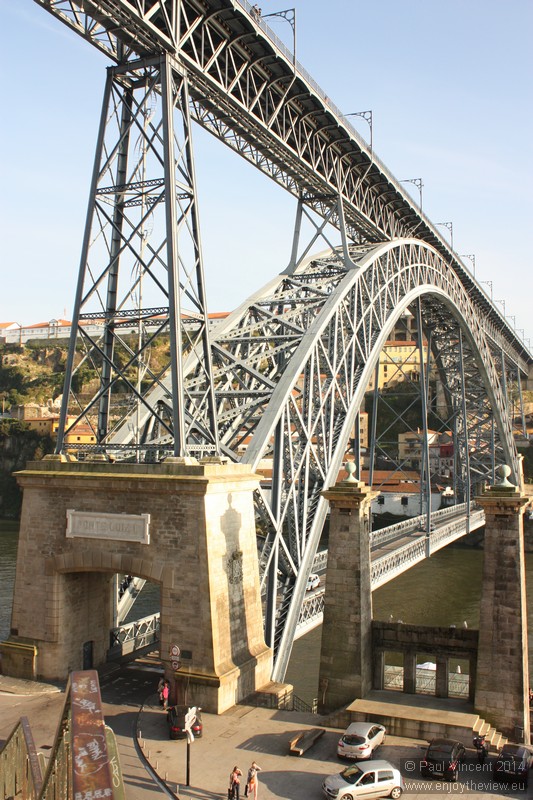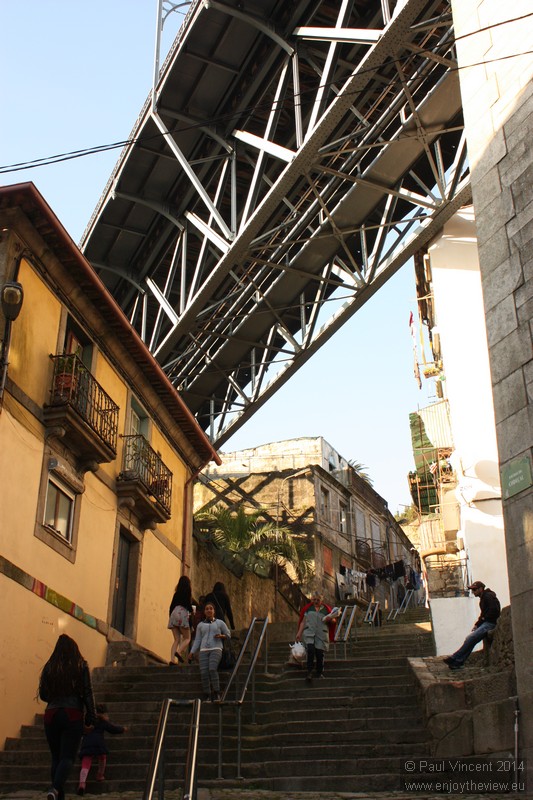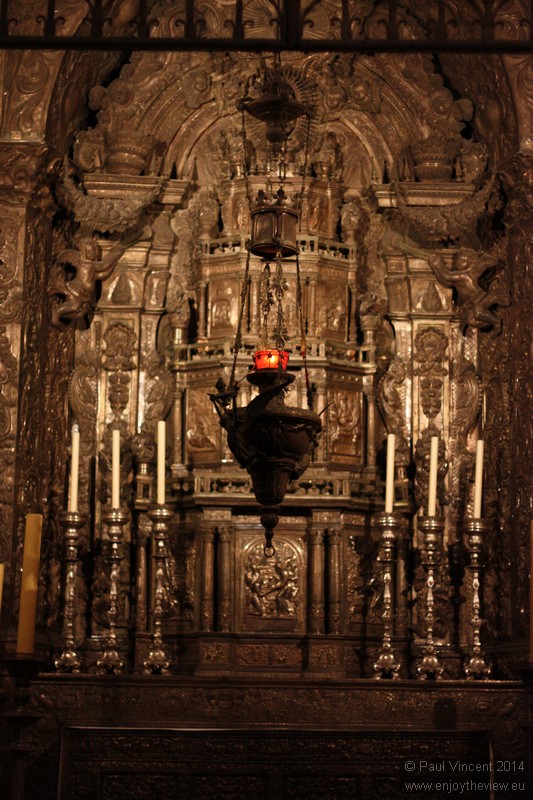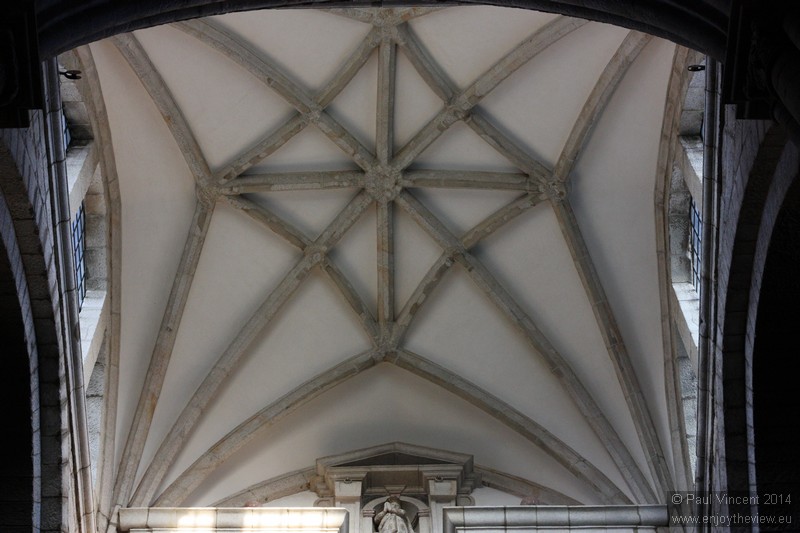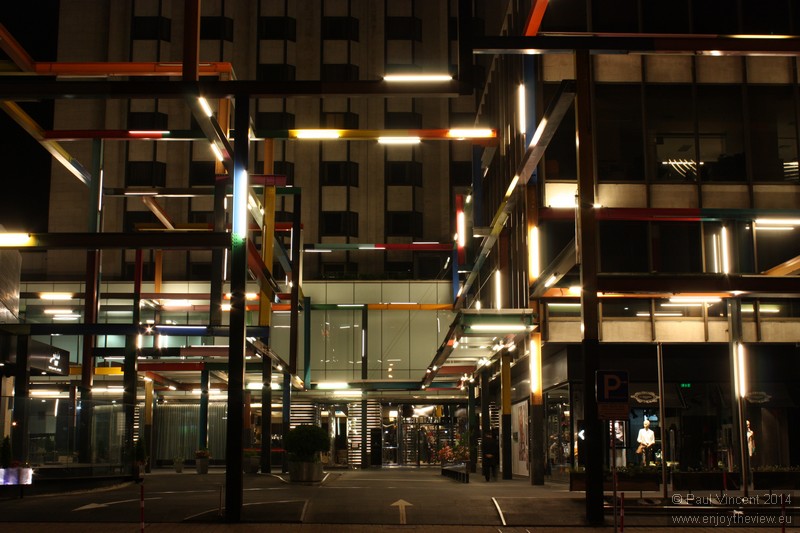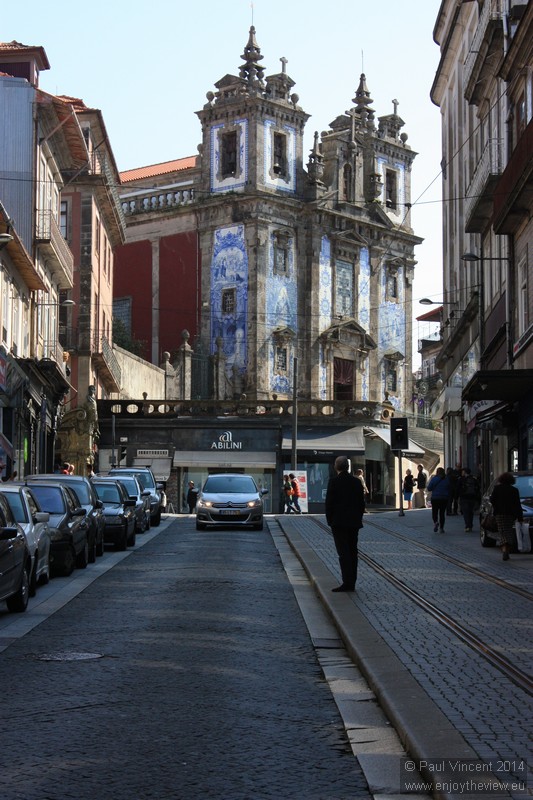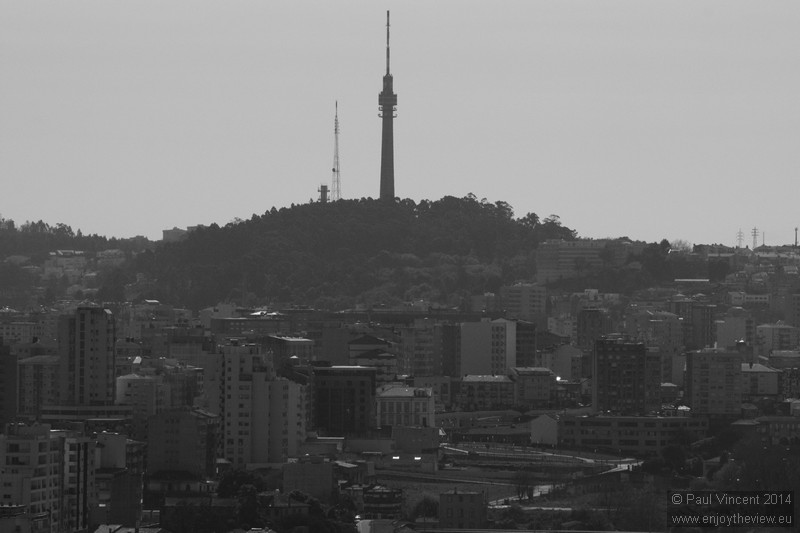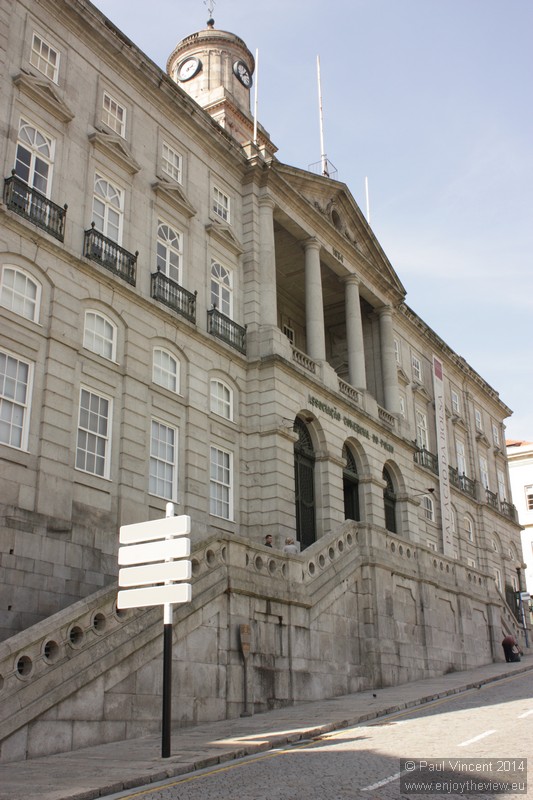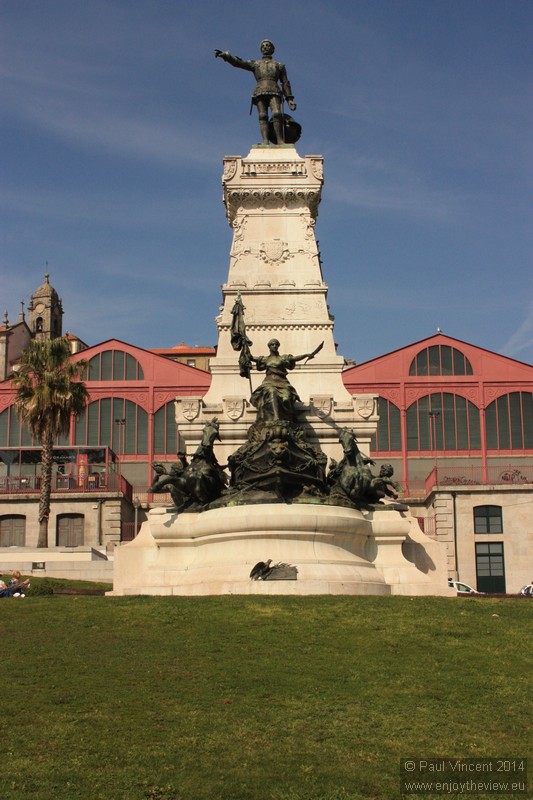The Luís I Bridge spans the Douro River between the cities of Porto and Vila Nova de Gaia.
At the time of its construction, the 172 metre span was the longest of its type in the world.
Porto's cable car connects the Cais de Gaia, on the banks of the Douro, with the Jardim do Morro.
The Gaia cable car opened in April 2011.
The bridge originally carried roads at both levels. Pedestrians can still cross either deck.
The Arrábida Bridge is the most downstream bridge across the Douro River.
Route D of the Metro do Porto occupies the top deck, which is also a pedestrian walkway.
This metro line opened in 2005. The upper deck of the bridge was previously used by motor vehicles.
The funicular first opened in 1891, but an accident forced its closure just two years later.
The city stands on a steep gradient, on the banks of the Douro River.
A passing section allows two cabins to operate on the otherwise-single line.
After remaining closed for over a century, the system re-opened in 2004.
The Douro is the third-longest river in the Iberian Peninsula, after the Tagus and Ebro.
The Calem Cellars now also incorporate a museum.
A choice of routes to the top.
The funicular offers commuters and tourists an effortless way to climb the 61-meter rise.
The Primitive Wall was probably built during the Roman Empire and rebuilt during the 12th century.
A small home beside the Dom Luís Bridge.
17th century fountain, featuring a sculpture of São Miguel.
The cathedral was completed in the 13th century.
Silhouette of Porto's Primitive Wall.
The sun sets over the Douro Valley.
A flock of birds fly off in to the sunset.
The top deck of the bridge is shared by pedestrians, cyclists and the metro.
The Serra do Pilar Monastery, to the left, served as a fort during the 1832 Siege of Porto.
The moon rises over the Douro Valley.
The moon hovers above the over the Infante, Maria Pia and São João bridges.
End of the line at Trindade station.
This façade is part of the Terceira Trindade Hospital, which occupies an entire block.
Statue of Almeida Garrett, in front of the city hall.
View over Aliados station.
This commemorative column stands on the Rotunda da Boavista roundabout.
The Peninsula War took place from 1808 to 1814.
The monument celebrates the Portuguese and British victory against Napoleon in the Peninsula War.
This major concert hall is known as the Casa da Música.
The iconic concert hall was designed by Dutch architect Rem Koolhaas.
The building's unique design has been highly acclaimed.
Originally intended to open in 2001, the building was finished four year behind schedule.
The building was inaugurated by the Portuguese president on 15 April 2005.
The Casa da Música houses the Orquestra Nacional do Porto, Orquestra Barroca and Remix Ensemble.
A footway to the opera house.
The site of the building was previously a holding site for trams.
São Bento metro station.
Escalators from São Bento metro station.
Stairs leading up to the oldest part of the city, and the cathedral.
Archway to old residential street.
Each of the square towers is supported with two buttresses and crowned with a cupola.
Morro da Sé is the oldest part of the city.
A narrow and hilly street.
The Clérigos tower can be seen in the distance.
15th century church on Rua das Flores. Major restoration work took place in the 18th century.
The sun shines down a narrow and hilly street.
Thus church boasts a tiled façade.
Statue of a newspaper salesman.
The square has its origins in the beginning of the 18th century.
This monument was sculpted by French sculptor Anatole Calmels and dedicated in 1866.
The statue depicts Peter IV holding the Constitution that he fought to protect.
The naked woman sits with her arms resting on a plinth of four faces.
The Boys', also known as 'The Abundance', is another sculpture by Henrique Moreira.
The city hall is located at the top of Aliados Avenue.
The city hall dates back to the beginning of the 20th century.
The building incorporates a 70-metre high tower with a carillon clock.
Almeida Garrett was a Portuguese poet, playwright, novelist and politician, born in Porto.
Sculpture embedded in façade of the city hall.
Detail of the façade.
Sculptures holding up the façade of Porto's city hall.
Statue on roof of Terceira Trindade Hospital.
Fountain in front of Holy Order of Terceira Trindade.
Clock tower above Porto City Hall.
These figures appear to support the clock tower.
One of the faces under the Naked Girl sculpture.
The statue of a warrior holding spear and shield was sculpted by João de Sousa Alão in 1818.
The tiled murals inside São Bento station depicts scenes from Portugal's history.
The station is named after a Benedictine monastery that occupied this land in the 16th century.
King Carlos I laid the first stone of this station in 1900. It was opened in 1916.
The building is still a functioning railway station.
The station serves as the main terminus for Porto's suburban railways lines.
The trains are operated by Comboios de Portugal.
A lady await the metro at São Bento station.
Jardim do Morro metro station sits at the southern end of the Dom Luís Bridge.
A metro train crossing the Dom Luís Bridge.
The Serra do Pilar Monastery was listed as a World Heritage Site by UNESCO in 1996.
View downstream along the Douro River.
The bridge and its shadow.
The metro runs along the top deck, general traffic on the lower one.
The Infante Bridge opened in 2003, to replace the upper deck lane of the Dom Luís Bridge.
The lower station of the Funicular dos Guindais can be seen on the left.
Dense housing on the northern bank of the Douro River.
Metro tracks on the upper level of the Dom Luís Bridge.
Very steep path on the northern bank of the Douro River.
The track of the Funicular dos Guindais rises through this neighbourhood.
South bank of the Douro River.
Building attached to the northern side of the circular church.
Building attached to the southern side of the circular church.
Small gardens on the edge of the Douro Valley.
View of the bridge from the top station of the Teleférico de Gaia cable car.
The Dom Luís Bridge affords little privacy to those living below.
Staggered buildings on the northern bank of the Douro River.
The Church of Santa Clara dates back to the early 15th century.
The Church of Santa Clara was built beside the Santa Clara Convent.
The plain facade belies the exceptional interior of this small church.
The 15th century church features superb gilded woodwork.
Most of interior decorations were added in the 17th century.
Ceiling of the Santa Clara Church.
Arnaldo Gama was a 19th-century journalist and writer.
A circular water fountain.
Staircase through the historic old town of Porto.
Porto's tram route 1 follows the northern bank of the Douro River.
Homes beside the Douro River.
Arrábida Bridge in the distance.
The Arrábida Bridge over the Douro River connects Porto to Vila Nova de Gaia.
A passing tram on Porto's route 1.
This monument commemorates the expedition of Ceuta in 1415.
An old lighthouse station, on the Douro River.
A couple stroll along the harbour wall.
A small harbour sits at the at mouth of the Douro River.
This neoclassical-style Pergola was restored in 2008.
Designed by landscape architect Sidónio Pardal, this is the largest urban park in Portugal.
120,000 vehicles a day use this motorway.
Steps leading up the Casa da Música.
A grand avenue through Porto's suburbs.
Statues to the side of the church's entrance.
A cross in front of the Santo António das Antas Church.
Tower above Santo António das Antas church.
The Estádio do Dragão, inaugurated in November 2003, is the home of F.C. Porto.
The stadium hosted five matches of the UEFA Euro 2004 tournament, including the opener.
One of the stadium entrances.
The stadium has a capacity of 50,431.
The stadium is also used as a concert venue.
The Ponte Dona Maria railway bridge was built in 1877 by Gustave Eiffel.
The bridge spans 160 metres and was built to carry the railway line to Lisbon.
In 1991, the bridge was superseded by the adjacent St John bridge.
Opened in 1991, the Ponte de São João is 1,140 metres long.
A train crosses the Douro River.
The Infante Bridge, foreground, superseded the Dom Luís Bridge for most motor traffic.
This bridge was completed in 2002 and the arch spans 280 metres.
View from the Infante Bridge.
Gate leading to the Geophysics Institute of the University of Porto.
The monastery seen from Jardim do Morro.
The Dom Luís Bridge dominates this neighbourhood.
The Dom Luís Bridge is also known as the Ponte Luís I.
In 1982, the bridge was designated as a cultural heritage 'Property of Public Interest'.
The Dom Luís Bridge replaced an old bridge immediately adjacent to it.
Homes along the northern bank of the Douro River.
The Cathedral sits high on the northern bank of the river.
The large building at the top here is the former residence of the bishops of Porto.
The bell tower of Clérigos Church dominates its neighbourhood.
The north bank of the Douro River is densely populated.
Cruising down the Douro River.
The old Customs House.
The Dom Luís and Infante bridges over the Douro River.
Dom Luís Bridge and Serra do Pilar Monastery.
High-rise blocks to the west of the city centre.
This vast building was once the New Customs House.
More recently, the New Customs House housed the Transport and Communications Museum.
Western wing of the vast Customs House.
An iron pier over the Douro River.
The Arrábida Bridge viewed from the south bank of the Douro River.
The bridge includes four elevators, allowing pedestrians to reach the deck from either river bank.
The bridge was classified as a national monument in 2013. Its arch rises 70 metres above the river.
The bridge carries 136,000 cars across the river every day.
Elevated walkway through the Douro River Estuary nature reserve.
Kingfishers, Cormorant and Herons are among the many species that stop in this nature reserve.
The Nature Reserve of the Douro Estuary is open to the public every day from sunrise to sunset.
View towards Porto from the bird-watchers cabin.
Washing lines on the river bank.
The Dom Luís and Infante bridges over the Douro River.
Strands of vegetation, backlit by the sun.
This Dominican nunnery was founded in 1345.
Lower station of the Porto cable car.
Small Baroque church.
Boards advertising the various brands of port.
View of the Dom Luís Bridge from the Gaia side of the river.
The Calem cellars are located on the riverside of Vila Nova de Gaia.
The Calem Cellars sit underneath the Serra do Pilar Monastery.
Access portal to the lower deck of the bridge.
Graffiti alongside the steps rising from the north bank of the Douro River.
The pillars of an old bridge can be seen alongside the current Dom Luís Bridge.
The Dom Luís Bridge passes over residential streets on either side of the Douro.
Twisted column on the square in front of Porto Cathedral.
Front façade of the cathedral.
Nave of Porto Cathedral.
Font at Porto Cathedral.
Ceiling of the cathedral.
São Bento station.
A metro train pulls in to São Bento station.
A metro train on Porto's line D.
Metro tracks on the upper level of the Dom Luís Bridge.
Bolhao station.
The Chapel of Santa Catarina is also known as the Chapel of Souls.
The exterior walls of the chapel are covered with blue and white ceramic tiles.
The chapel is covered in 15,947 tiles.
The tiles depict the lives of St. Francis of Assisi and Santa Catarina.
An Art Nouveau café.
This shop is noted for its Art Nouveau and Rococo elements.
The Clérigos Church, completed around 1750, translates as 'Church of the Clergymen'.
The tower was built after the church, and completed in 1763.
One of Porto's most recent public places.
The eastern façade of the University's rectory.
The triangular building is the Portuguese Centre of Photography, previously a prison.
Porto Cathedral and, behind it, the Serra do Pilar Monastery.
A street busy with pedestrians.
Traffic passes over the Arrábida Bridge; and a distant cargo ship sails by.
The tiles façade of the Church of Congregados.
A kiosk on the Praca de Lisboa.
View towards the Pavilhao Rosa Mota arena.
A variety of bells reside within the Clerigos Tower.
The Portuguese Centre of Photography in Porto was founded in 1997.
Bright yellow façade in front of the Clerigos Tower.
The Portuguese Centre of Photography is home to more than 60 collections.
The Portuguese Centre of Photography is located in the former Court of Appeal of Porto.
Construction of the former Court of Appeal started in 1767.
Sculpted by Juan Muñoz.
Founded in 1833, this was Portugal's first national museum.
Part of the Santo António Hospital.
HERE
This was the site of Portugal's Crystal Palace, on a similar scale to the one in London.
This dome replaced the Crystal Palace in 1956 and hosts concerts and sporting events.
The venue has a seating capacity of 10,000.
A peacock in the Crystal Palace Gardens.
This street was built in the last quarter of the nineteenth century.
This church was rebuilt in 1762, following a fire.
Statue of Prince Henry the Navigator, who led early efforts to explore trade with other continents.
The Stock Exchange Palace was built in the 19th century.
The Infante D. Henrique Square honours Henry the Navigator, who was born nearby.
It is suggested that Prince Henry the Navigator was born in this Old Customs House.
Sculpted by João Cutileiro and located in Ribeira Square.


























